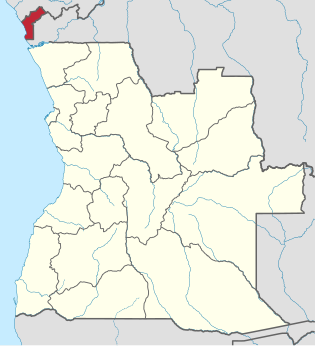
The current political regime in Angola is presidentialism, in which the President of the Republic is also head of state and government; it is advised by a Council of Ministers, which together with the President form the national executive power. Legislative power rests with the 220 parliamentarians elected to the National Assembly. The President of the Republic, together with the parliament, appoints the majority of the members of the two highest bodies of the judiciary, that is, the Constitutional Court and the Supreme Court. The judiciary is still made up of the Court of Auditors and the Supreme Military Court.
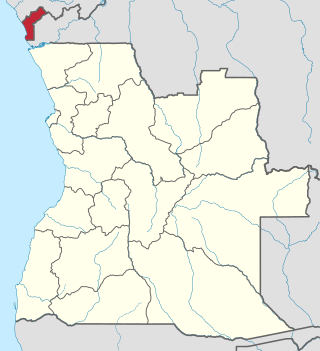
Cabinda is an exclave and province of Angola, a status that has been disputed by several political organizations in the territory. The capital city is also called Cabinda, known locally as Tchiowa, Tsiowa or Kiowa. The province is divided into four municipalities—Belize, Buco-Zau, Cabinda and Cacongo.

The Front for the Liberation of the Enclave of Cabinda is a guerrilla and political movement fighting for the independence of the Angolan province of Cabinda. Formerly under Portuguese administration, with the independence of Angola from Portugal in 1975, the territory became an exclave province of the newly independent Angola. The FLEC fights the Cabinda War in the region occupied by the former kingdoms of Kakongo, Loango and N'Goyo.

The Angolan War of Independence, known as the Luta Armada de Libertação Nacional in Angola, began as an uprising against forced cultivation of cotton and evolved into a multi-faction struggle for control of Portugal's overseas province of Angola among three nationalist movements and a separatist movement. The war ended when a peaceful coup in Lisbon in April 1974 overthrew Portugal's Estado Novo dictatorship and the new regime immediately stopped all military action in the African colonies, declaring its intention to grant them independence without delay.

The Angolan Civil War was a civil war in Angola, beginning in 1975 and continuing, with interludes, until 2002. The war began immediately after Angola became independent from Portugal in November 1975. It was a power struggle between two former anti-colonial guerrilla movements, the communist People's Movement for the Liberation of Angola (MPLA) and the anti-communist National Union for the Total Independence of Angola (UNITA).

The Forças Armadas de Cabinda (FAC), or Armed Forces of Cabinda, is the armed wing of the political Cabindan nationalist group Frente para a Libertação do Enclave de Cabinda. the Movement for the Liberation of the Enclave of Cabinda (MLEC) in Léopoldville in 1959, chaired by Luis de Gonzaga Ranque Franque, the Action Committee of the Union Nationale Cabindaise (CAUNC) in Brazzaville in 1961, chaired by Henriques Nzita Tiago and the Alliance du Mayombe in Pointe-Noire in 1962, chaired by António Eduardo Sozinho Nzau. In 1963, the three separatist political movements merged to found the Front for the Liberation of the Enclave du Cabinda (FLEC), based in Pointe-Noire.
The Treaty of Simulambuco was signed in 1885 by representatives of the Portuguese government and officials in the N'Goyo Kingdom. The agreement was drafted and signed in response to the Treaty of Berlin, which was an agreement between the colonizing European powers about how to divide up Africa. The long-established Portuguese, not wanting to miss out on the Scramble for Africa involving territories near its own old possessions, began to colonize deeper than the numerous trading ports it had controlled on the African coast since the early 16th century. In contrast to the violent struggles between the Portuguese and some native peoples in Mozambique, the colonization of Cabinda was peaceful.

The Republic of Cabinda was an independent protectorate of Portugal that was taken over by Angola after Portugal declared Angola a free country. It is currently an unrecognized state which Angola considers its Cabinda Province. The Front for the Liberation of the State of Cabinda-Exército de Cabinda (FLEC) claimed sovereignty just after the Republic of Cabinda was proclaimed as an independent country in 1975 from Portugal and just after Angola invaded. The government of this entity operates in exile, with offices located in Paris, France, and Pointe Noire, Republic of the Congo.
The Alvor Agreement, signed on 15 January 1975 in Alvor, Portugal, granted Angola independence from Portugal on 11 November and formally ended the 13-year-long Angolan War of Independence.
The 2000s in Angola saw the end of a 27-year-long civil war (1975–2002) and economic growth as foreign nations began to invest in Angola's untapped petroleum reserves. The government continues to resettle internally displaced persons as its economy recovers and expands.
António Bento Bembe is the Secretary-General of the Front for the Liberation of the Enclave of Cabinda (FLEC), a general of Angolan Army, a minister without portfolio in the Angolan government between 2007-2009. He is the Secretary of State of the Angolan government for Human Rights, has served as the President of the Cabinda Forum for Dialogue (FCD) since its establishment in 2004. He served as President of FLEC-Renovada.
Democratic Front of Cabinda is a separatist rebel group that fights for the independence of Cabinda province from Angola.

During Angola's civil war, Cuban forces fought alongside the Marxist–Leninist People's Movement for the Liberation of Angola (MPLA) government; against the Western-backed National Union for the Total Independence of Angola (UNITA) and National Liberation Front of Angola (FNLA) guerrillas who were aided by the South-African army. The present day outcome of the war resulted in the MPLA changing from a Marxist–Leninist party to a multi-party democratic system based on neoliberal principles. From an economic standpoint, Cuba has lost its preferred status among Angolans and South Africa has become the biggest single investor and trading partner with Angola.
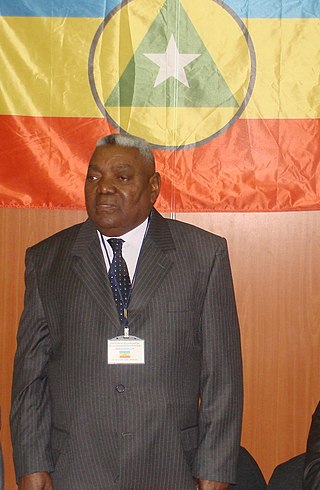
Henrique N'zita Tiago was President of the Armed Forces of Cabinda, a rebel group that fights for the independence of Cabinda from Angola. He died in Paris on 3 June 2016. It was reported that Tiago was 88 years old when he died, and that he was buried in France – as Cabinda was not independent at the time of his death.
In the 1990s in Angola, the last decade of the Angolan Civil War (1975–2002), the Angolan government transitioned from a nominally communist state to a nominally democratic one, a move made possible by political changes abroad and military victories at home. Namibia's declaration of independence, internationally recognized on April 1, eliminated the southwestern front of combat as South African forces withdrew to the east. The MPLA abolished the one-party system in June and rejected Marxist-Leninism at the MPLA's third Congress in December, formally changing the party's name from the MPLA-PT to the MPLA. The National Assembly passed law 12/91 in May 1991, coinciding with the withdrawal of the last Cuban troops, defining Angola as a "democratic state based on the rule of law" with a multi-party system.

The People's Republic of Angola was the self-declared socialist state which governed Angola from its independence in 1975 until 25 August 1992, during the Angolan Civil War.
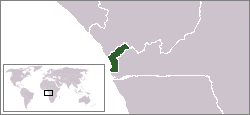
A terrorist attack occurred on 8 January 2010 as the Togo national football team traveled through the Angolan province of Cabinda on the way to the 2010 Africa Cup of Nations tournament, two days before it began in Angola. A little-known offshoot of the Front for the Liberation of the Enclave of Cabinda (FLEC), a group promoting independence for the province of Cabinda, known as the Front for the Liberation of the Enclave of Cabinda – Military Position (FLEC-PM), claimed responsibility for the attack. Bus driver Mário Adjoua, the team's assistant manager Améleté Abalo, and media officer Stanislas Ocloo were killed, with several others injured. Secretary General of the FLEC-PM Rodrigues Mingas, currently exiled in France, claimed the attack was not aimed at the Togolese players but at the Angolan forces at the head of the convoy. Authorities reported two suspects were detained in connection with the attacks.
This is a list of events in 2010s in Angola:

The Katanga insurgency is an ongoing rebellion by a number of rebel groups in the Democratic Republic of the Congo, some of which aim for the creation of a separate state within Katanga. While the insurgency has been active in various forms since 1963, insurgent groups have recently redoubled their efforts after the 2011 jail break that freed Gédéon Kyungu Mutanga, who commanded the majority of the Katangese separatist groups until his surrender to Congolese authorities in October 2016.
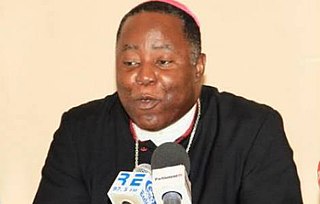
Filomeno do Nascimento Vieira Dias is an Angolan prelate of the Catholic Church who has been Archbishop of Luanda since 2015; he was an auxiliary bishop there from 2003 to 2005. He was Bishop of Cabinda from 2005 to 2014, where his lack of identification with the province and its separatist movement initially made his appointment controversial and he was only installed after sixteen months.
